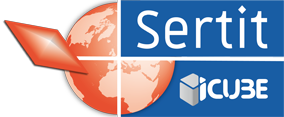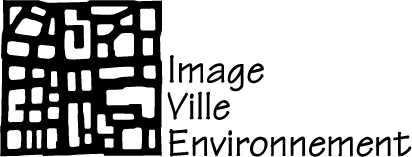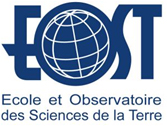LIVE The UMR Laboratoire Image Ville Environnement is a multidisciplinary research team from the CNRS and the University of Strasbourg. The research activities of LIVE are focusing on the dynamics of urban and territorial systems, risks modeling, quality of life, mobility, land use and land cover changes, information and knowledge definition and extraction, remote sensing and image processing, GIS and geovisualization. In LIVE, the group ‘IMAGE’ is specialized on the processing of Earth Observation data in urban planning and monitoring and risk analysis, land cover/use changes detection and modeling. The group develops some multiscale and multiresolution strategies of image processing based on pixel and/or object-‐based image analysis for environmental monitoring. The group has also some expertise in multi-‐temporal geospatial data acquisition (terrestrial laser scanner and photo, aerial platforms, ect). The team is also strongly involved in the CPER program A2S (Alsace-‐Aval-‐Sentinel) and in the THEIA activities at the national level.
Correspondent by team : Anne PUISSANT
School and Observatory of Earth Sciences (EOST) is an institution under the supervisory authority of the University of Strasbourg and the CNRS (French National Center for Scientific Research) in charge of education, research, observation in Earth Science and its diffusion. Situated in two buildings located on the central campus of the University of Strasbourg, EOST consist of more than 160 permanent employees among its staff.
Correspondent by team : Jean-Philippe MALET
The EA LIPADE is as Computer Sciences laboratory associated to the University Paris Descartes (Sorbonne Paris Cité). The SIP team (Systèmes Intelligents de Perception) develops a priority axis on image analysis and interpretation with a specific focus on visual perception for computer. The main contributions of our team consist in developing new algorithms and methods to process and analyse complex images (multi-‐ source image segmentation, 3D image reconstruction, image fusion, spatial relations, sparse methods, semantic image indexing and retrieval, object recognition, geometric image representation). An important thematic axis of the lab is Remote sensing imaging including non-‐exhaustively aerial image processing, high resolution satellite image interpretation. The LIPADE teams bring to the project experts in image analysis and information extraction from large image and mixed databases. Remote sensing constitutes one of the most active application fields, in particular in the context of temporal and spatial analysis, and hybrid image / knowledge-‐based information retrieval: COCLICO, SPIRIT (ANR).
 The EA MIPS -> IRIMAS is an interdisciplinary research laboratory hosted by the Haute Alsace University. The MIPS laboratory brings together all the research related to the disciplines of Computer Engineering, the Information and Communications Technologies (ICT) sector at the Haute Alsace University. The MIPS brings to the project experts in data mining, ontology engineering and knowledge engineering applied to image mining. The participants of MIPS have already been involved in ANR and/or European projects. The local PI, Dr. Germain Forestier is an expert in data-‐mining and knowledge engineering. The MIPS team also has an important experience in remote sensing image processing with contributions in Satellite Image.
The EA MIPS -> IRIMAS is an interdisciplinary research laboratory hosted by the Haute Alsace University. The MIPS laboratory brings together all the research related to the disciplines of Computer Engineering, the Information and Communications Technologies (ICT) sector at the Haute Alsace University. The MIPS brings to the project experts in data mining, ontology engineering and knowledge engineering applied to image mining. The participants of MIPS have already been involved in ANR and/or European projects. The local PI, Dr. Germain Forestier is an expert in data-‐mining and knowledge engineering. The MIPS team also has an important experience in remote sensing image processing with contributions in Satellite Image.
Correspondent by team : Germain FORESTIER
 MONASH University was founded in 1958 and is the largest University in Australia. It is a research-‐ intensive University, part of the “Group of 8” research-‐intensive universities in Australia. The Monash Center of Data Science has more than 60 world-‐leading researchers in data analysis, image processing, machine learning, optimization and simulation. Research activities of the involved researcher are focusing on machine learning and remote sensing where he is currently working towards improving the state of the art in scalable time series classification, with application to the analysis of satellite image time series.
MONASH University was founded in 1958 and is the largest University in Australia. It is a research-‐ intensive University, part of the “Group of 8” research-‐intensive universities in Australia. The Monash Center of Data Science has more than 60 world-‐leading researchers in data analysis, image processing, machine learning, optimization and simulation. Research activities of the involved researcher are focusing on machine learning and remote sensing where he is currently working towards improving the state of the art in scalable time series classification, with application to the analysis of satellite image time series.
Correspondent by team : François PETITJEAN
 The ICUBE-‐SERTIT is the Technological Transfer Centre specialized in producing geo-‐information from Earth Observation data in natural resources monitoring, land management, urban planning, environmental survey, plus natural disaster and risk management. SERTIT since 1986 has accompanied the CNES (SPOT AVAL to Pléiades HR and now ARCTOS), ESA (ERS-‐1, ENVISAT and Sentinel) and cooperates with space agencies worldwide (Canadian, Japanese, German (DLR) and Italian (ASI) on new radar applications and developments. SERTIT’s 24/7 Rapid Mapping Service is a major player in rapid response plus Risk & Recovery mapping for the civil security and humanitarian communities within the International Charter Space and Major Disasters (CNES) and European Projects (EC & ESA); now being a member of the e-‐GEOS led consortium providing Copernicus EMS services for the next 4 years. Within FP7 RASOR, SERTIT/UNISTRA provides quality advice, analyses user requirements, identifies critical satellite data sets and develops rapid and automated information extraction methodologies in support of disaster manager needs mining satellite archives over five pilot areas. ICUBE-‐SERTIT is also one the main contributors of the CPER A2S ‘Alsace-‐Aval-‐Sentinel’.
The ICUBE-‐SERTIT is the Technological Transfer Centre specialized in producing geo-‐information from Earth Observation data in natural resources monitoring, land management, urban planning, environmental survey, plus natural disaster and risk management. SERTIT since 1986 has accompanied the CNES (SPOT AVAL to Pléiades HR and now ARCTOS), ESA (ERS-‐1, ENVISAT and Sentinel) and cooperates with space agencies worldwide (Canadian, Japanese, German (DLR) and Italian (ASI) on new radar applications and developments. SERTIT’s 24/7 Rapid Mapping Service is a major player in rapid response plus Risk & Recovery mapping for the civil security and humanitarian communities within the International Charter Space and Major Disasters (CNES) and European Projects (EC & ESA); now being a member of the e-‐GEOS led consortium providing Copernicus EMS services for the next 4 years. Within FP7 RASOR, SERTIT/UNISTRA provides quality advice, analyses user requirements, identifies critical satellite data sets and develops rapid and automated information extraction methodologies in support of disaster manager needs mining satellite archives over five pilot areas. ICUBE-‐SERTIT is also one the main contributors of the CPER A2S ‘Alsace-‐Aval-‐Sentinel’.
Correspondent by team : David MICHEA


